Karjat - Bhimashankar Birding Trip - April 14-16, 2006
Bhimashankar..the name evokes memories of the Jyotirlinga... one of the 12 s
 acred places of Shiva in India and lots of trees and forest and snakes. I have been to Bhimashankar in the rains and in the winter but due to the climatic conditions, has never noticed or have not had the opportunity to notice the fauna....except the very rare appearance of the malabar giant squirrel or "Shekru" as it is called.
acred places of Shiva in India and lots of trees and forest and snakes. I have been to Bhimashankar in the rains and in the winter but due to the climatic conditions, has never noticed or have not had the opportunity to notice the fauna....except the very rare appearance of the malabar giant squirrel or "Shekru" as it is called. This trip last week (April 14-16) was done exclusively as a birding trip, the first halt being Karjat (van vihar) where we did a bit of birding on the 14th morning and then proceeded to Bhimashankar for the balance two days of intense birding. Karjat is another place which is oft neglected
This trip last week (April 14-16) was done exclusively as a birding trip, the first halt being Karjat (van vihar) where we did a bit of birding on the 14th morning and then proceeded to Bhimashankar for the balance two days of intense birding. Karjat is another place which is oft neglected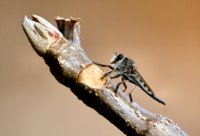 by the birders but this area has lots of promise and should be checked out in all the seasons. The birds that we came across in Karjat are enumerated in the list at the end of the blog. A total of nearly 100 birds out of which maximum sightings were in the Karjat area..Some of the pictures that I shot are are also put up here.... check out this robberfly....
by the birders but this area has lots of promise and should be checked out in all the seasons. The birds that we came across in Karjat are enumerated in the list at the end of the blog. A total of nearly 100 birds out of which maximum sightings were in the Karjat area..Some of the pictures that I shot are are also put up here.... check out this robberfly....Birds were calling from all the trees around us and Adesh as usual identifying them with their
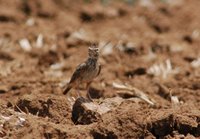 calls... the only sore point was the huge loudspeakers that were put up on the top of the temple, which belted out incessant songs in the loudest voice which not only was irritating but also camouflaging and masking the bird songs, making them difficult to be heard and identified. The face of Bhimashankar has had a tremendous change in the last so many years and blantant commercialisati0n of the religious sentiments had wrought havoc to the flora and fauna with businesses booming. Now, with the declaration of the area as a sanctuary for the Malabar Giant Squirrel (Shekru) and the area cleared of most of the encroachments except the original residents, the birds and bees are on their comeback trail which is quite surprising and heartwarming indeed.
calls... the only sore point was the huge loudspeakers that were put up on the top of the temple, which belted out incessant songs in the loudest voice which not only was irritating but also camouflaging and masking the bird songs, making them difficult to be heard and identified. The face of Bhimashankar has had a tremendous change in the last so many years and blantant commercialisati0n of the religious sentiments had wrought havoc to the flora and fauna with businesses booming. Now, with the declaration of the area as a sanctuary for the Malabar Giant Squirrel (Shekru) and the area cleared of most of the encroachments except the original residents, the birds and bees are on their comeback trail which is quite surprising and heartwarming indeed.We could hear the Shama, the Yellow Browed Bulbuls, the Puff Throated Babbler calling and
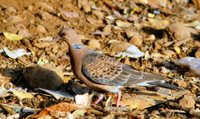 singing their mating songs. The Oriental Turtle Dove was seen seeking grains and insects outside the tea stall right at the entrance of the sanctuary, the small and large green Barbets making a racket and calling continuously with the bass being provided by the Cicadas.....it was heaven on earth... literally speaking.
singing their mating songs. The Oriental Turtle Dove was seen seeking grains and insects outside the tea stall right at the entrance of the sanctuary, the small and large green Barbets making a racket and calling continuously with the bass being provided by the Cicadas.....it was heaven on earth... literally speaking.One of the most shy birds that I found very difficult to capture was the Black Bulbul which, after
 a wait of nearly an hour, gave me enough glimpse of itself to make the most of my camera's abilities.. hope u liked it too..
a wait of nearly an hour, gave me enough glimpse of itself to make the most of my camera's abilities.. hope u liked it too.. Many lifers for me from and the others in our group at Bhimashankar, but hardly any for Adesh who has much more experience and seen most of it.
Many lifers for me from and the others in our group at Bhimashankar, but hardly any for Adesh who has much more experience and seen most of it.The birding spree continued....and oh yes..I forgot to mention that the drive down from Karjat to Bhimashankar at night was quite eventful with we sighting a Indian Nightjar but not captured on camera and also an owl which flew right from the middle of the road (not identified)... The Yellow Browed Bulbul gave us a good display and made us all say WOW...
Being the breeding season for quite many birds...we could spot quite
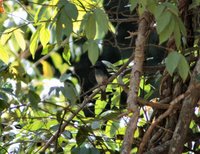 many in their brilliant breeding colour and singing to attract their mates. Quite many had their nests already in place and were either incubating their eggs or busy with the catering services for their young. We could see quite many Pied Bushchat females with worms and insects in their beaks doing the hard job of bringing their young ones up... quite a cheerful sight indeed when we are in the process of destroying their habitat completely.
many in their brilliant breeding colour and singing to attract their mates. Quite many had their nests already in place and were either incubating their eggs or busy with the catering services for their young. We could see quite many Pied Bushchat females with worms and insects in their beaks doing the hard job of bringing their young ones up... quite a cheerful sight indeed when we are in the process of destroying their habitat completely.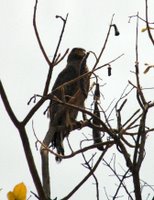
Some of the raptors that we saw on the way were the honey buzzard making their rounds in the sky, the crested serpent eagles using the thermals to gain height and checking out their potential prey or resting themselves on the treetops. Quite many of them are in their moulting stages with quite many secondary feathers being absent or in tatters. One very surprising lifer for all of us and first time in Bhimashankar were the 4 Amur Falcons seen flying above our heads in neat formation. This was seen on the Ahupe route from Bhimashankar where we had gone birding for larks and bushchats.
We also went in search of the reptile and insect world and unearthed a mine of gold... we found quite many scorpions cooling off their heels and stings under rocks. We also unearthed a
 shieldtailed snake and also quite a few of the Tarantula species of spiders under the rocks,waiting for their prey. Not to speak of the dragonflies and damselflies which were dancing around our heads and also the butterflies mud puddling in and around the Gupt Bhimashankar area where there were puddles of water which attracted them like magnets. Also caught in camera was a potter wasp with its very vivid markings.
shieldtailed snake and also quite a few of the Tarantula species of spiders under the rocks,waiting for their prey. Not to speak of the dragonflies and damselflies which were dancing around our heads and also the butterflies mud puddling in and around the Gupt Bhimashankar area where there were puddles of water which attracted them like magnets. Also caught in camera was a potter wasp with its very vivid markings.Birders in this group included Adesh Shivkar, Ravi Vaidyanathan, Parag Damle, Ritesh Bagul, Mayuresh Kadrekar and Animish Deshpande.
The total list of birds is as below :
1) Black bulbul
2) Yellow browed bulbul
3) White bellied blue flycatcher
4) Orange headed thrush
5) Grey hornbill
6) Crested serpent eagle
7) Grey wagtail in full breeding plumage
8) Malabar whistling thrush
9) Oriental honey buzzard
10) Puff throated babbler
11) Scimitar babbler (calls heard)
12) Blacked naped monarch
13) Brown cheeked fulvetta
14) Olive backed pipit
15) Blyth’s pipit along with its semi albino partner (yet to identify)
16) Oriental turtle dove
17) Nilgiri wood pigeon
18) Pied bush chat
19) Scarlet minivet
20) Golden fronted leaf bird
21) White cheeked barbet
22) Common Kestrel
23) Grey Nightjar (Call)
24) Crimson backed sunbird
25) Alpine swifts
26) Amur Falcon
27) Gray jungle Fowl (Calls)
28) Common woodshrike (calls)
Birds seen at Karjat and on the way to Bhimashankar
29) Black hooded oriole
30) Yellow throated sparrow
31) Spotted dove
32) Jungle babbler
33) Jungle Myna
34) Plum headed parakeet
35) Purple sunbird
36) Thick billed Flowerpecker
37) Rufous tailed lark
38) Tickell’s blue flycatcher
39) Fantail flycatcher
40) Rufous Tree pie
41) Wire tailed swallows
42) Indian Robin
43) Ashy crowned sparrow lark
44) Malabar crested lark
45) Sykes’s lark
46) Magpie robin
47) Amur falcon
48) Common kestrel
49) Shikra
50) Black shouldered kite
51) Common kite
52) Common Iora
53) Small green bee eater
54) Long tailed shrike
55) Black Drongo
56) Caspian tern
57) Montagu’s Harrier
58) Hoopoe
59) Large billed crow
60) House sparrow
61) Shama
62) Savannah Nightjar
63) Blue tailed bee eater
64) House crow
65) Blue rock pigeon
66) Little brown dove
67) Eurasian collard dove
68) Red vented bulbul
69) Red whiskered bulbul
70) Ashy prinia
71) Gray breasted prinia
72) Indian Night jar (calls)
73) Small minivet (calls)
74) Large gray babbler
75) Racket tailed Drongo
76) Intermediate Egret
77) Brahminy starling
78) Rosy starling
79) Common Myna
80) Crimson breasted barbet
81) Spotted owlet (calls)
82) Purple rumped sunbird
83) Red wattled Lapwing
84) Asian palm swift
85) Dusky crag martin
86) Red rumped swallows
87) Little cormorant
88) Indian cormorant
89) Pond heron
90) Cattle egret
91) Grater coucal
92) Asian koel
93) White browed bulbul (calls)
94) Oriental White eye
Animals & Reptiles that we came across :
Wild pigs, domesticated cows and buffaloes, hanuman langurs, malabar giant squirrel. We could not however spot the bhekar (barking deer), sambar, the civet cats, etc... the only relief was the malabar giant squirrel that gave us great poses for taking its pictures... which is quite rare indeed.
Ravi